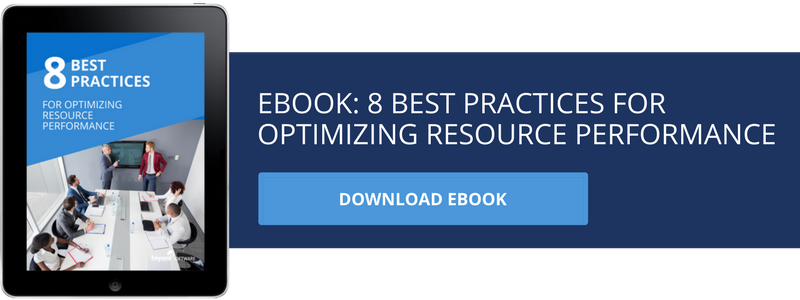We've recently profiled a few of the world's notable project failures as examples of "what not to do" when managing a project. While each of them failed on their own merits and for their own reasons, these projects all shared one thing: an absence of performance indicators that would have told their leadership that their project was veering way off course.
KPIs Set the Project Stage
Establishing a project's key performance indicators (KPIs) is as essential to the successful completion of that project as is securing adequate and appropriate financing. However, many companies fail to competently scope out both their ultimate preferred goals AND the critical incremental steps they must take to achieve them. Project managers who make the time to articulate and calendar the cumulative course of activities that underpin the success of the overall endeavor are much more likely to complete their project on time and on budget. They are also better prepared to make appropriate changes, if needed, along the way.
Structuring the Slate of Project KPIs
A fully informed slate of KPIs recognizes that incremental steps are necessary for the completion of every project and that each of those steps may also have additional internal steps. Further, separate elements of large projects will have their own distinct sets of KPIs that are different from all other aspects of the project but must ultimately work in conjunction with all the others to move the whole effort through to its end. Accordingly, clarifying the project-based KPIs should be a group effort that includes inputs from the responsible person or persons from each project segment.
KPI Themes
Ideally, project KPIs are a reflection of everyone's understanding of how the project will roll out over time and their particular contribution to that effort:
- KPIs should align with both contractor goals and the culture of the owner entity. Developing an asset that doesn't ultimately meet the needs or expectations of its owner will be a failure regardless of how beautiful or useful it might be.
- Each indicator represents a measurable metric of performance and should be expressed in a way that all project participants understand. When there are separate contributors to the project, KPIs that identify activities using language everyone understands keep contributors informed of their progress as well as the progress that everyone else is making (or not making). In the A380 debacle, the project suffered a two-year delay and several millions of dollars in costs when the Germans responsible for engineering the wing wiring used software that was incompatible with that used by the French to create the wing structure. The German wiring design needed a complete redo to work properly within the French structural design.
- Each KPI should also be reasonable and established in consideration of the timing, financial resources, and labor demands of the overall project. Placing unreasonable requirements on any one participant can threaten the forward progress of them all if that contractor folds under pressure.
- Perhaps most importantly, each KPI should provide an opportunity for critical decision-making as the project progresses. The achievement of some KPIs may trigger a pivot to another segment of the project, or reveal the need for a review of the relevance or requirements of upcoming project sectors. And each achieved KPI should be measured in the context of how it is assisting the entire project to meet its ultimate goal.
KPIs as Process Guides
When a project involves numerous participants whose labor is dependent on other project contributors, it is essential that the KPIs also structure the processes by which participants will work together. Taking a step-by-step approach that considers each of the common project areas (such as scope, cost, time, labor, communications, risk, procurements, and quality) gives each participant a strategy to follow while implementing their aspect of the venture:
- The KPIs should identify the interrelational dependencies that exist throughout the project so that each dependent entity understands how their work affects the others. The Sydney Opera House project suffered years of delays and cost overruns as contractors made numerous changes to materials and designs, each of which caused workers to wait while project management gathered the newly required materials.
- The KPIs might also suggest ways for participants to share a workload or transfer an obligation from one sector to another if that is a feasible option. The KPI could suggest the circumstances that would trigger a shift, as well as the process to follow to make it happen.
- KPIs can also guide conflict resolution activities. Conflicts can arise when resources are unavailable, when timeframes or schedules are missed, or when one contractor inadvertently disrupts the work of another. KPIs designed to provide structure and guidance for conflict resolution can reduce the time and resources that are lost during the process. The Colorado VA Hospital project went over budget by millions of dollars not just because of its failed procedures and lack of leadership, but also because of legal fees spent to resolve years of conflicts and finger-pointing.
- KPIs are also valuable to smooth the communications process across the project. Including a KPI that clarifies when information is to be shared, who will produce it and with whom they will share it will keep each entity within that loop accountable for the part they play within it.
Other project elements that benefit from dedicated KPI development include management of absenteeism, measurements of quality standards, and the level and value of contractor inputs and outputs over time.
Professional Services Automation Software Solves KPI Conundrums
Project failures continue to occur as stakeholders and project managers move forward without developing the appropriate or comprehensive KPI schedules that will keep them on track to a timely and budget-friendly conclusion. Today's PSA software gives every project manager the tools needed to flesh out the particular KPIs required on any one project, as well as the tracking and monitoring tools necessary to mark their progress over time. At Beyond Software, we have the KPI generation and monitoring tools you need to get and keep your project moving forward.
For additional information on Beyond Software please contact:
Nicole Holliday
nholliday@beyondsoftware.com
866-510-7839



